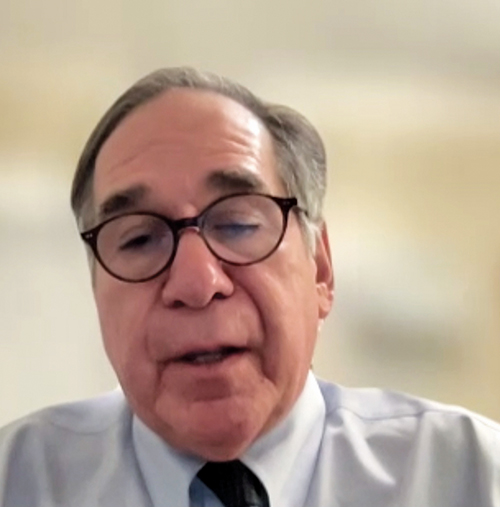
On January 10, the Westchester Jewish Council hosted Adjunct Professor Jeffrey M. Wice, senior fellow at New York Law School and director of the New York Census and Redistricting Institute, on “Redistricting: Why It Is Important to the Westchester Community.”
Wice began, “For decades, New York’s congressional and state legislative maps were drawn as a simple bill, by the legislature, with approval of the Governor. In 2014, former Governor Cuomo negotiated a constitutional amendment, with the Senate’s Majority Republicans, to create an independent redistricting commission (IRC) with criteria for the commission and legislature to follow. Ten members are appointed, with two picks for the Speaker, the Senate Majority Leader and both Minority Leaders. Those eight choose two additional members, neither of whom are officially Republican nor Democrat, creating the five Democrat, five Republican split.
“The commission’s criteria include: population equality, one-person/one-vote, minority voting rights, simple-shaped compact contiguous districts. Contiguous means you can go from one end of a district to another without leaving the district. Districts could retain cores of previous districts or follow municipal boundaries but cannot favor or disfavor political parties or candidates.”
The commission met in early 2022. Deadlocked Republicans and Democrats sent two different sets of maps to the legislature. Both were rejected. The commission never developed other sets. Governor Hochul signed Legislature-drawn Assembly, Senate and Congress maps into law.
Steuben County Republicans challenged the Congressional and Senate maps, but not the Assembly’s. “Assembly Republicans got what they wanted,” Wice said. Plaintiffs argued the Legislature wasn’t authorized to draw its own maps until after a second set of Commission maps. Also, legislative-drawn Senate and Congressional maps were partisan/gerrymandered to Democrats’ advantage.
Upholding the challenge, John Cervas from Carnegie Mellon University was appointed to draw new 2022 maps. A new lawsuit was filed in State Supreme Court. These Democrat plaintiffs argued the Commission and Legislature draw congressional maps, not the courts. The plaintiffs asked the court to order the commission to submit maps to the Legislature to consider. This was first rejected but the Appellate Division reversed the lower Court judge. Republicans got an immediate stay, but nothing prevented the commission from at least doing its day-to-day work.
Wice then explained that the court set a February 28 deadline for the commission’s 2024 maps. The state Board of Elections set February 27 as the start-date for petitions. The commission met on December 28.“You need seven of the 10 members voting in the affirmative, including one from each of the four legislative leaders’ appointees, which means a bi-partisan agreement.”
Wice continued: “Both chambers must approve the map on a two-thirds supermajority vote, as required in the Constitution because one party controls both chambers. Had the legislature remained divided, only a simple majority is needed. If they fail to agree, the plan with the most votes is sent to the legislature for consideration. If a second IRC map is defeated, the legislature draws its own map in the third round, as it deems necessary.”
The legislative session started last week. Wice explained: “Democrat Commission member John Flateau passed away in December. His vacancy will be filled by his appointing official, Senate Majority Leader and President Pro-Tem Andrea Stewart-Cousins. In the best scenario, the Commission will send something to the legislature in January. If they reject the plan, the legislature’s own plan can be voted on two to three days later.”
Regarding voters’ letters to the Commission, “they will pay attention to it,” Wice said. “I know there’s concern in the Westchester district that George Latimer is challenging.”
On current lines remaining in place, Wice noted, “There’s a possibility, depending on the calendar and what doesn’t happen. If the Commission or the legislature fail to put a plan in place for timely petitioning to begin in late February, the current map can be used again. If new court action is filed attacking new maps, the current plan could be used again, also.
“Communities of interest must be considered in drawing the maps. Not really defined in law, it’s describing an area with like-minded residents, whether socioeconomic, religious, medical, educational or commonality with neighbors.
“The conversations I’ve seen about Westchester’s Jewish community is every reason to argue that heavily Jewish communities should be considered in the same district. But Jewish communities don’t have federal Voting Rights Act protections as Black, Hispanic and Asian populations. My friends in Brooklyn’s Orthodox community argue that in the 1960s, had we been as organized as we are now, it would have been a protected class. I can assure you that’s not the situation. Westchester County, at the congressional level, doesn’t present voting rights issues to help minority voters.”
Wice concluded: “Stay tuned, read the papers, check the news. Things are going to happen. I can’t say what the outcome will be but it’s not over.”











